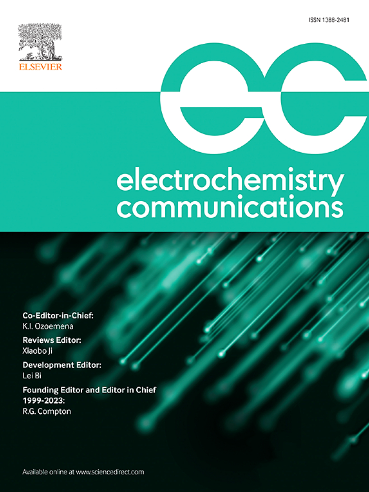Application of graphitic carbon nitride (g-C3N4) in solid polymer electrolytes: A mini review
IF 4.2
3区 工程技术
Q2 ELECTROCHEMISTRY
引用次数: 0
Abstract
Commercial lithium-ion batteries (LIBs) predominantly rely on liquid electrolytes, which are prone to various safety risks, such as leakage and combustion. Solid-state batteries (SSBs), represented by solid polymer electrolytes (SPEs), offer a dual advantage of enhancing safety and increasing energy density for electrochemical energy storage devices. However, the inherent characteristics of SPEs, such as high crystallinity and restricted molecular chain mobility, result in low ionic conductivity at room temperature, further limiting their commercial applications. Introducing inorganic fillers has proven to be an effective strategy to improve the ionic conductivity of SPEs. Graphitic carbon nitride (g-C3N4) stands out with its graphene-like two-dimensional planar structure, exhibiting exceptional physical properties (tunable electronic structure and excellent mechanical performance) and chemical stability (resistance to acid, alkali, and organic solvents). These attributes make it a widely researched for enhancing the comprehensive performance of SPEs. This paper provides a detailed overview of the synthesis techniques for g-C3N4, focusing on its action mechanisms for improving ion transport within SPEs. It comprehensively summarizes the applications and performance optimization strategies of g-C3N4 in SPEs, while also discussing future perspectives and directions for advancing the role of g-C3N4 in enhancing the performance of SPEs.

石墨氮化碳(g-C3N4)在固体聚合物电解质中的应用
商用锂离子电池(LIBs)主要依靠液体电解质,容易出现泄漏和燃烧等各种安全隐患。以固体聚合物电解质(spe)为代表的固态电池(SSBs)具有提高电化学储能装置安全性和提高能量密度的双重优势。然而,spe的固有特性,如高结晶度和受限制的分子链迁移率,导致室温下离子电导率低,进一步限制了它们的商业应用。引入无机填料已被证明是提高spe离子电导率的有效策略。石墨氮化碳(g-C3N4)以其类石墨烯的二维平面结构脱颖而出,具有优异的物理性能(可调谐的电子结构和优异的机械性能)和化学稳定性(耐酸、碱和有机溶剂)。这些特性使得提高spe的综合性能成为一个被广泛研究的问题。本文详细介绍了g-C3N4的合成技术,重点介绍了g-C3N4改善spe内离子传输的作用机制。全面总结了g-C3N4在spe中的应用和性能优化策略,并讨论了未来推进g-C3N4在spe性能提升中的作用的展望和方向。
本文章由计算机程序翻译,如有差异,请以英文原文为准。
求助全文
约1分钟内获得全文
求助全文
来源期刊

Electrochemistry Communications
工程技术-电化学
CiteScore
8.50
自引率
3.70%
发文量
160
审稿时长
1.2 months
期刊介绍:
Electrochemistry Communications is an open access journal providing fast dissemination of short communications, full communications and mini reviews covering the whole field of electrochemistry which merit urgent publication. Short communications are limited to a maximum of 20,000 characters (including spaces) while full communications and mini reviews are limited to 25,000 characters (including spaces). Supplementary information is permitted for full communications and mini reviews but not for short communications. We aim to be the fastest journal in electrochemistry for these types of papers.
 求助内容:
求助内容: 应助结果提醒方式:
应助结果提醒方式:


